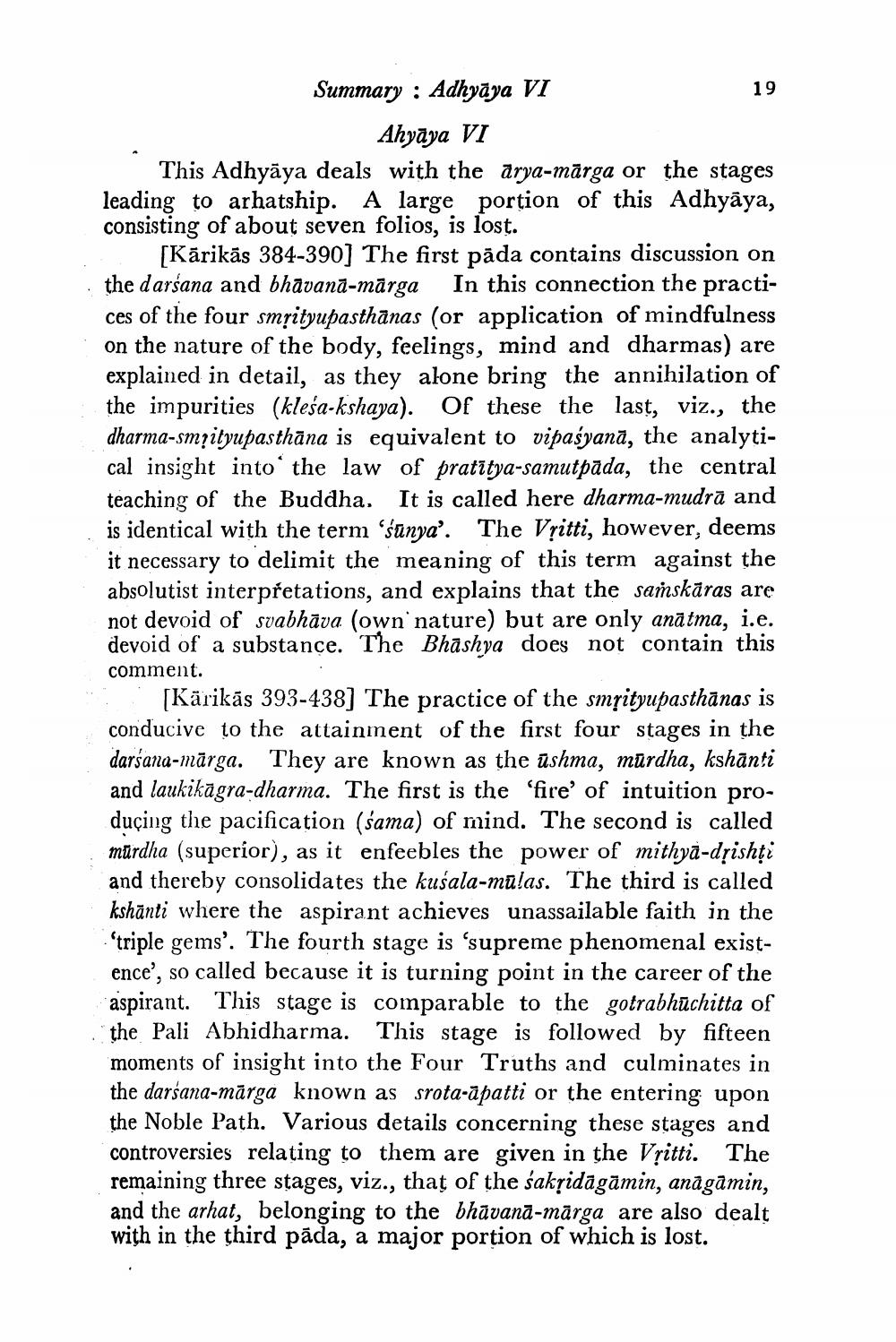________________ Summary : Adhyaya VI 19 Ahyaya VI This Adhyaya deals with the arya-marga or the stages leading to arhatship. A large portion of this Adhyaya, consisting of about seven folios, is lost. [Karikas 384-390] The first pada contains discussion on the darsana and bhavana-marga In this connection the practices of the four smrityupasthanas (or application of mindfulness on the nature of the body, feelings, mind and dharmas) are explained in detail, as they alone bring the annihilation of the impurities (klesa-kshaya). Of these the last, viz., the dharma-smrityupasthana is equivalent to vipasyana, the analytical insight into the law of pratitya-samutpada, the central teaching of the Buddha. It is called here dharma-mudra and is identical with the term 'sunya'. The Vtitti, however, deems it necessary to delimit the meaning of this term against the absolutist interpretations, and explains that the sanskaras are not devoid of svabhava (own nature) but are only anatma, i.e. devoid of a substance. The Bhashya does not contain this comment. [Karikas 393-438] The practice of the smrityupasthanas is conducive to the attainment of the first four stages in the darsana-marga. They are known as the ushma, murdha, kshanti and laukikagra-dharma. The first is the 'fire' of intuition producing the pacification (sama) of mind. The second is called murdha (superior), as it enfeebles the power of mithya-drishti and thereby consolidates the kusala-mulas. The third is called kshanti where the aspirant achieves unassailable faith in the triple gems'. The fourth stage is 'supreme phenomenal existence', so called because it is turning point in the career of the aspirant. This stage is comparable to the gotrabhuchitta of the Pali Abhidharma. This stage is followed by fifteen moments of insight into the Four Truths and culminates in the darsana-marga known as srota-apatti or the entering upon the Noble Path. Various details concerning these stages and controversies relating to them are given in the Vsitti. The remaining three stages, viz., that of the saknidagamin, anagamin, and the arhat, belonging to the bhavana-marga are also dealt with in the third pada, a major portion of which is lost.




